Last updated on August 7th, 2023

These 12 lead generation tips will help you optimize your lead generation to get the most results for your buck.
Are you struggling to generate enough qualified leads to hit your growth goals?
You’re not alone.
73% of all B2B leads are not ready to be closed.
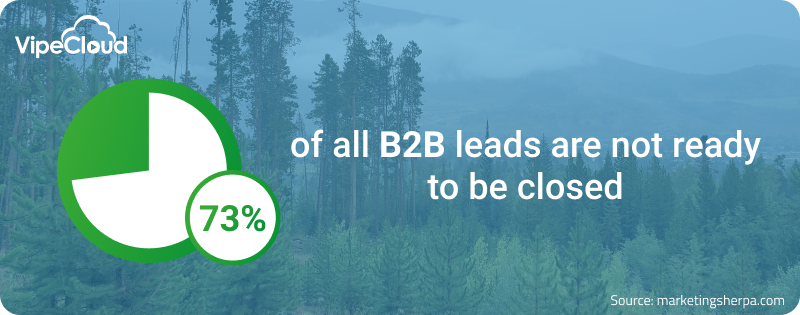
Optimizing your lead generation will help you increase your leads, close rate, cost per lead, and revenue.
Feel free to skip to the section that you need the most help with:
- How Does Lead Generation Work?
- How Can I Generate Leads Quickly?
- 12 Lead Generation Tips & Best Practices
- Which Is The Best Method For Lead Generation?
- How Do You Improve Your Lead Generation Process?
- Generating Leads Is Made Simpler With This

VipeCloud is the only Automation tool your small business needs to
be the hero to your customers.
With Email, Texting, Social, Suites, Chat, Stories, Video Email & Sign Up Forms fully built-in, we provide you with the perfect platform to grow your business.
15 Day Free Trial – Get started risk free. No CC needed.
How Does Lead Generation Work?
Lead generation is a method of attracting customers that are interested in your product or service.
You can have all the best sales tools, scripts, products, and teams, but nothing is really happening if leads aren’t flowing.
So as you can see, it’s fundamental for business success and longevity.
Many companies go about lead generation differently, and there are numerous variables, so pinpointing one ultimate method for everyone is a tall task.
You’ll typically find lead generation put in two categories:
These two modalities still have the same goal of generating high-quality leads consistently.
Leads submit their name, phone, and email to follow up with later, whether inbound or outbound.
With interest shown towards the business, leads are qualified to see how buying-ready they are. If there’s a fit, the company will explain the value of their product and close the deal.
How To Do Lead Generation
Lead generation is done via a chosen method. This can be the following:
- Advertising
- Cold calling
- Cold email
- Content marketing
If you’re just getting your feet wet with generating leads, it’s best to start with 2-3 methods and figure out which one is getting you the most ROI.
For instance, a B2C mortgage company does direct mail and Google ads to get more borrowers.
If Google ads give them a considerably better ROI than direct mail, then allocating their marketing budget would be smart.
It’s always great to diversify your methods as long as you have the capital and team to do so profitably.
Having at least 1 inbound method and at least 1 outbound is a plus as well.
How Can I Generate Leads Quickly?
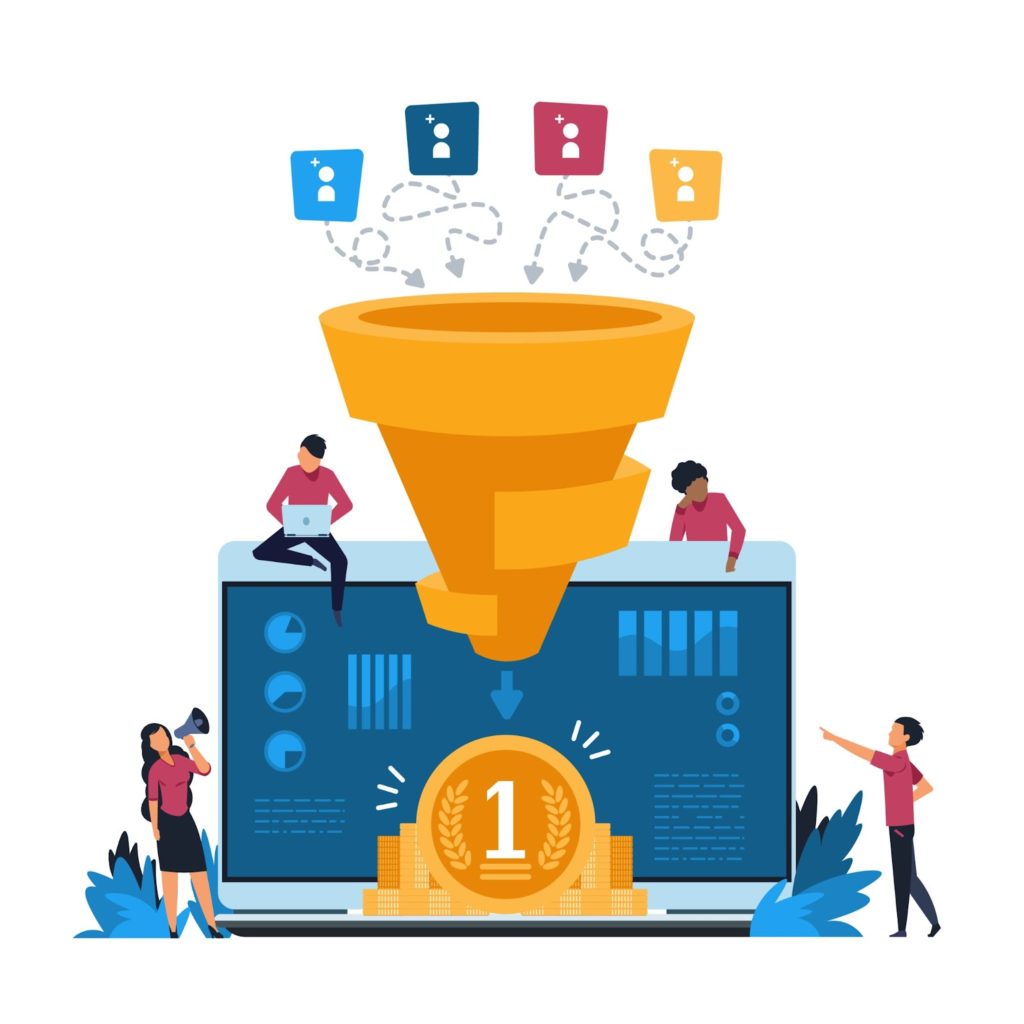
The fastest way to generate leads is by effectively marketing a pain-solving product or service on the right platform.
Let me backtrack:
What is “effective marketing,” and what is an “fantastic product/service” exactly?
Effective marketing is a message that accurately shows the value of your product logically AND emotionally.
The logical part is your offer (discount, value prop) and the emotional part is your copy (the words you use, scarcity, and even testimonials.)
Now “a pain-solving product or service” is a little more subjective since different markets respond to different things.
To know if your product/service solves pain, you need a proof of concept (beta version.)
Essentially you’re gathering data on how the market responds to your product. Companies typically do this through trial runs by offering their product for free for a specific period.
An example of this is how course creators sell their course initially to a small group to see how well it’s received.
With the feedback given, they improve on it until it’s a fantastic product.
The more positive the feedback, the stronger your marketing message will be because you’ve proven your concept.
With these two down, you need to test out different lead generation methods and see which is generating the leads the fastest.
12 Lead Generation Tips & Best Practices

The following 12 lead generation tips should help you improve your business’s lead quantity and quality.
1. Optimize Your Lead Capture Pages
Your lead capture pages are a crucial component to converting leads.
They’re how a stranger turns into a prospect.
Here are some things to keep in mind when optimizing your pages:
- Fast loading time (Try compressing any images if your loading time is slow)
- Mobile friendly and responsive
- Efficient form fields (Not having too many fields as conversion rate tends to drop when you do.)
- Good copy, professional images, etc.
- Lead magnet automation (making sure prospects are getting your lead magnet if you’re offering one)
Also, make sure your online information is up to date — any online listings like Yelp, for instance, since people may naturally search up your business.
(Having a strong and consistent social media presence also helps.)
With all these pages optimized in their respective ways, you’re seen as a trustworthy and key buying option.
2. Score Your Leads
Lead scoring is the ability to rank your most valuable prospects based on who they are and how they engage.
What makes a prospect “valuable” is totally up to you when you use a lead scoring system.
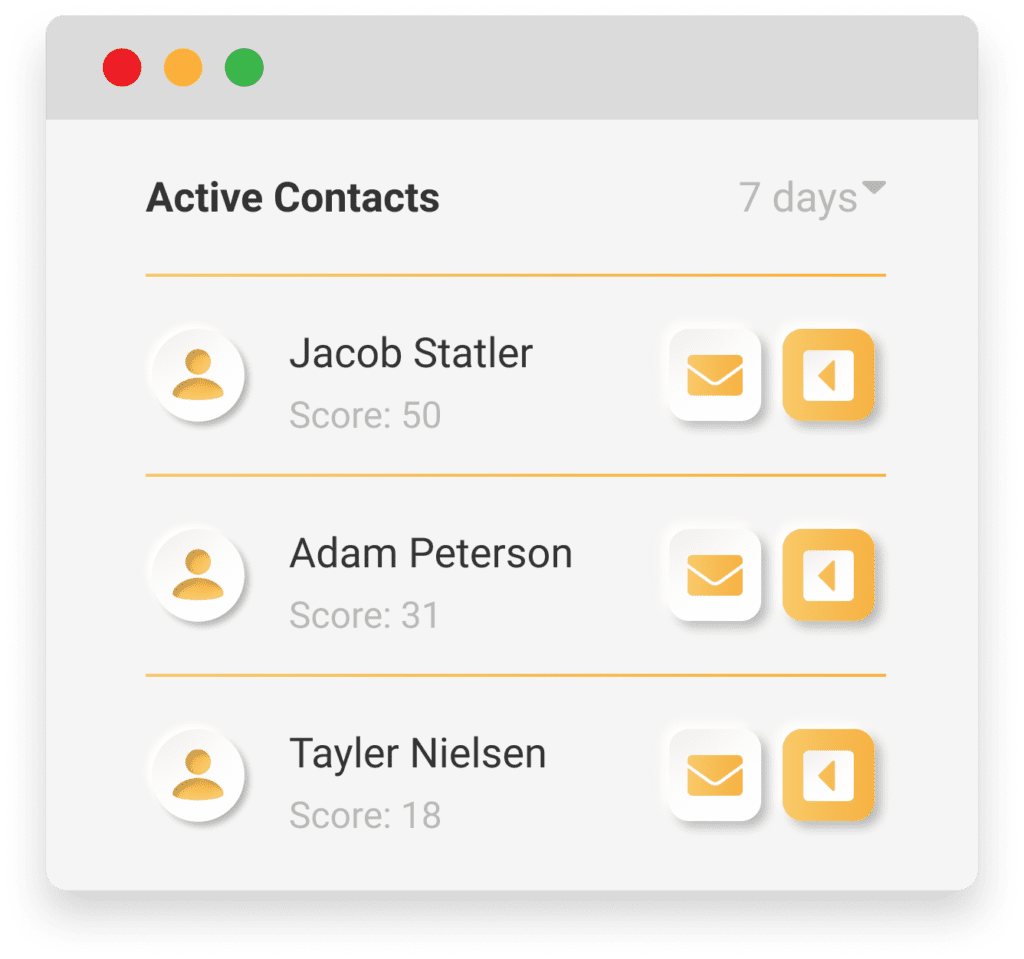
Why score leads?
It saves you time because your sales team can prioritize their conversations rather than just following up with any lead that comes through.
Plus lead scoring has other benefits:
- Helps segment your prospects and differentiate who’s marketing qualified (MQLs) and who’s sales qualified (SQLs)
- Lead scoring makes selling easier because there are less tire-kickers and more prospects who are a better fit. With better conversations and more deals closing, the confidence across your sales team rises.
- Lead scoring helps you profile your prospects so you know the precise details of your target audience. This is perfect when you’re looking to do hyper-targeted online advertising on Facebook for instance.
- Lead scoring parameters can be adjusted as your organization grows or changes (If you change your targeted market, or want to expand to newer markets.)
If you’re a small business, VipeCloud’s lead scoring feature called “contact scoring” is perfect for you.
You can set what your leads are scored on and even when points are deducted!
Contact scoring is part of VipeCloud’s robust Sales CRM for small to mid-sized businesses. (You can learn more here.)
3. Leverage SEO
68% of ALL online experiences start when people use a search engine.
That’s a TON of people.
By ranking your website the right way, you get in on leads that are already looking for you.
SEO or “search engine optimization” is when you utilize search-friendly practices to rank higher on search engines.
Common ways of ranking higher include:
- Using high traffic keywords with a low to medium amount of competition
- Gaining authoritative backlinks to your website
- Internally linking to different, relevant pages on your website
- Fast page load speed
- Optimized title tags and meta descriptions
Why is SEO great for generating leads?
For starters, SEO is a great long-term way to gain site traffic. And your site visitors aren’t just anybody — these are people that have searched for keywords that are in your industry!
While being on your site, visitors can naturally browse through and possibly take actions like read your blog or fill out a sign-up form, for example.
With your form connected to your CRM, you can take in their information and follow up with them accordingly.
4. Set KPI Goals
In marketing, KPI goals are your dream destinations.
Forgetting to set your KPI goals is a big mistake because it becomes hard to tell how well your lead generation is going.
For instance, setting a goal for 150 leads a month is a good starting point because you can backward engineer the process.
With outbound, you can look at how many outreach messages, or cold calls, it takes to get one lead and forecast how many you need to send.
With inbound lead generation, you can see how many leads your ad budget is generating per month and so on.
Your KPI goals are the compass for everything you do, marketing and sales related.
Identify which metrics are most important and set lead generation KPI goals that will help your business reach its overall objectives.
5. Create Audience-Focused Marketing
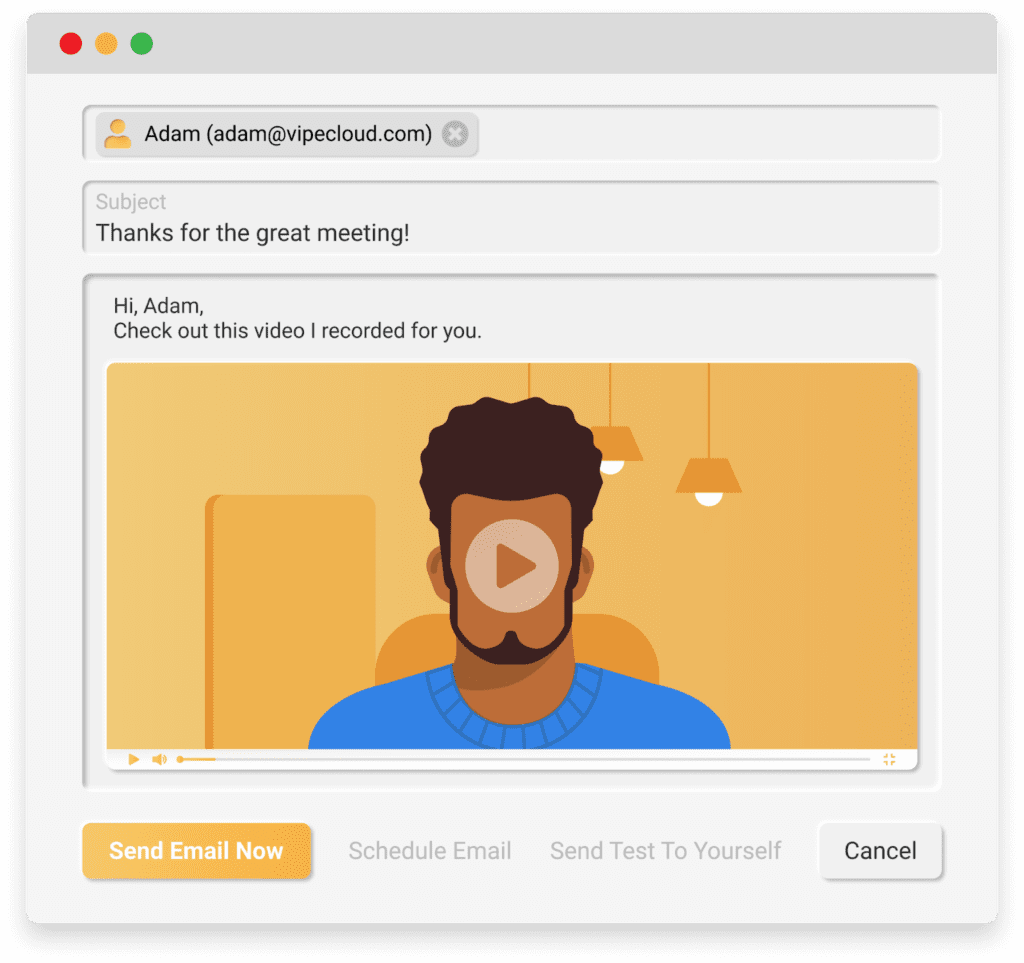
Audience-focused marketing is simply speaking to what the audience needs to know and cares about.
And what do people care about?
Themselves!
That’s why many marketers emphasize how important benefits-based marketing messages are.
Creating audience-focused marketing is all about market research (reading industry reviews and feedback) and seeing how you can mention how your product solves common pain points.
Pro-Tip: Make a psychographic (info on your ideal customer’s buying habits and motivations) to tailor your marketing message accurately. This will give your message a personalized touch even though you’re speaking to an audience.
With this down, you’ll be better able to convey the value proposition of your product and convert impressions into leads.
6. Educate & Nurture
96% of your visitors aren’t ready to buy when they get to your website.
Now, this isn’t the end of the world as long as you have adequate visitor volume and a way of capturing their information.
Capturing information is how you’ll nurture them throughout the weeks, months, and even years!
But nurturing isn’t just a weekly “buy from me!” email. Nurturing is how you stay top of mind by also educating your leads.
Think:
- “What’s some helpful information I can give regarding my industry?”
- “What actionable lessons can my prospects learn that will make their businesses better?”
- “What whitepapers, brochures, and resources can I send in my email newsletters that people can gain value from?”
Educating your prospects will help them make more informed decisions. On top of that, they’ll associate the new information with you, which brings more credibility.
Lastly, keep your nurturing emails personalized. For example, just including the recipient’s first name in the subject line, boosts open rates by 29.3%!
7. Have A System And Lead Management Strategy
Generating leads is one thing, but having an organized system for handling the leads is something else.
There should be protocols that your marketing and sales team does for EVERY lead.
This can include the exact time that a salesperson should follow up after a form is submitted (the faster, the better).
Create your lead generation system. Then, perfect it with testing, delegation, and automation.
Automation makes handling and distributing leads super easy and is what helps companies scale.
The best part? You don’t need to hire more reps to scale with automation.
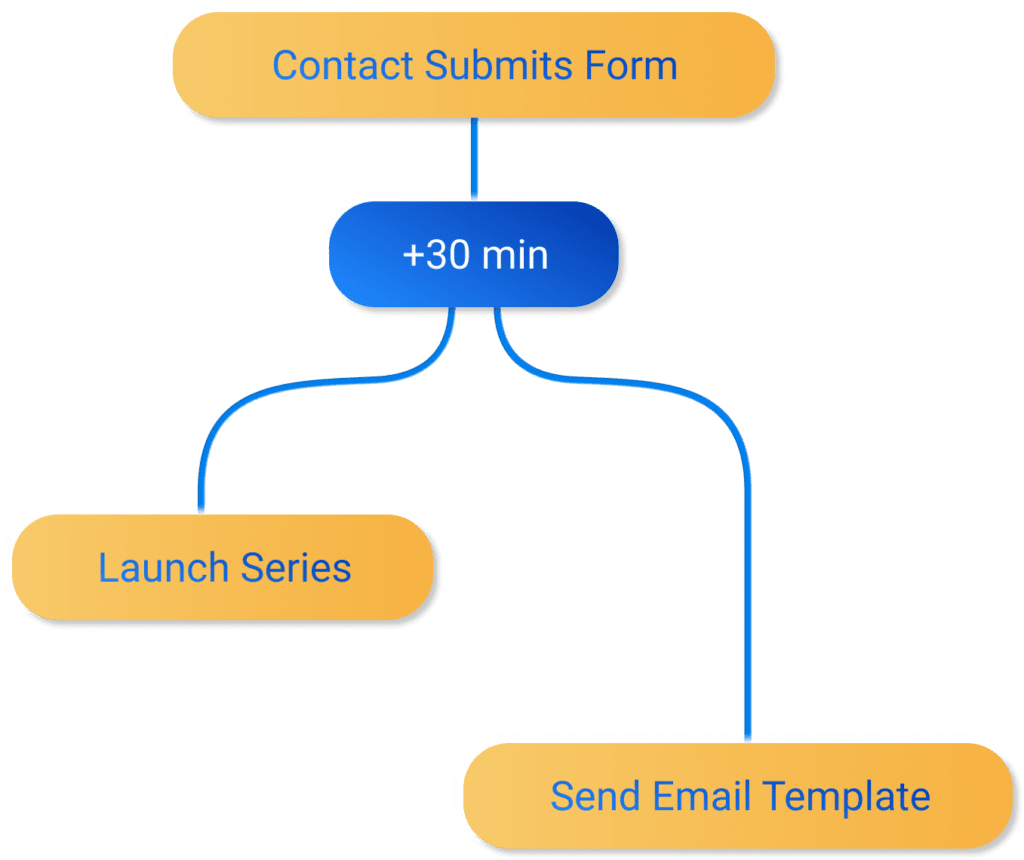
That’s why VipeCloud’s lead generation automation lets you create automation touchpoints for every lead that comes in.
VipeCloud also helps you stay on top of how your leads respond to your drip campaign and many other tracking features (scoring leads, removing unsubscribes, etc.).
8. Create A Strong Lead Magnet
Most people at a shopping mall love free samples.
And pretty much every business owner LOVES free information.
Because as a business leader, continually learning gives you an edge in your industry.
Lead magnets are a free resource or service that you give in exchange for someone’s contact information.
Whether you’re B2B or B2C, your lead magnet has to stand out as something worth entering information for.
Here are some lead magnet ideas to play around with:
- Checklists
- “How-To” guides
- Case studies
- PDF Infographics
- A Podcast
- A Free course
- Webinar
- A Quiz
And here are 3 qualities of a solid lead magnet:
- Easily digestible information (somewhat skimmable)
- Valuable information that gives you credibility
- They have a call-to-action incorporated into them
9. Perfect Your CTAs
Your CTA is a clear statement for potential leads to take action on something.
If you’re driving traffic to your landing page, the steps for filling out your form should be clear.
Often you’ll find that marketers put the same CTA on a page multiple times as you scroll down.
Why?
Because it’s a continuous reminder on what to do next. It’s also convenient for your visitor to click it rather than scroll back up.
The truth is, people can be distracted by a case study or even a video on the page and not take action.
And of course, don’t overdo your CTA, but look to see how many times and where you can put it.
For instance add your CTA after every major section of your long form landing page:
- After a video
- After testimonials
- After benefits
- After your guarantee
So if your page has about 4 major sections, 3-4 CTAs buttons is a good benchmark.
Here are some CTA button ideas:
- Download now
- “Yes, send me xyz”
- Begin free trial
- Get your free pdf
- Book an appointment.
Pro-tip: When leads submit their information, test out additional offers (free or paid) that they might like on your thank-you page (this is known as the value ladder).
10. Always Explain Next Steps
After your CTA, you want to ALWAYS explain what your prospects can expect next.
If your sales organization will be following up shortly, that’s exactly what you can say.
This is important because it sets expectations with the lead, which increases the likelihood of a rep and lead getting connected.
If you’re running Facebook ads and using the lead generation campaign objective, be sure to add a quick “what’s next” blurb on the last page of your lead generation form.
11. A/B test your forms

Whether your leads are from social media, digital ads, or a search engine, split testing your landing pages is crucial.
The reason is because you can better understand what’s working and what’s not.
If you only test one lead capture page and it doesn’t do well, it might not be because “it doesn’t work.”
It might be that your form isn’t enticing enough, your copy could be improved, or you just need more visitors.
Split testing different forms give you perspective, so you can make distinctions on why one page generated more leads than another!
Then, you can optimize your pages for the best results.
12. Show Social Proof
63% of people have to hear a company’s claim 3-5x before they actually believe it.
This is why social proof is so crucial.
If you’re looking to generate leads, what you say about your company will have tons more impact when your customers say the same thing.
Social proof bias is one of the biggest influences on how people make buying decisions.
Just look at Amazon‘s upsells on any product page:
“Frequently bought together…”
Amazon‘s algorithm uses other consumer behavior to suggest what a user should buy.
This helps Amazon increase average order value and gives personalized recommendations the consumer will probably like.
But the consumer also gets “nudged” to get that extra item because “frequently bought together” implies that other people also bought those items.
In your business, having social proof helps your leads understand that what you’re offering is tested and trusted.
Here are some great forms of social proof for any business:
- Testimonials
- Reviews
- Case studies
- Industry statistics
If you don’t happen to have social proof for your product, you can always do free trial runs to gain feedback!
Lead Generation Ideas For Small Business B2B
Here are some lead generation ideas you can test and narrow down which is most effective for you.
We’ll break them down into two main categories.
Outbound lead generation: Cold calling, cold email, social media outreach (messaging), online communities, job boards.
Inbound lead generation: Digital ads, content marketing (blogs, video marketing, social media posts), SEO, website chatbot automation, email marketing to subscribers,
What Is The Best Way To Generate Leads?
There’s no one-size-fits all when it comes to lead generation.
But a good rule of thumb would be to narrow down your best lead generation methods that touch on inbound and outbound.
It’s better to have 2 consistent methods than 6 that are “here and there.”
The best way to figure out what is working is by tracking and analyzing your results week in and week out.
Simply revisit your KPI goals and see if your method is on the right track.
But don’t be quick to jump ship if your cold email campaign isn’t working the first two weeks, for instance.
It could be your approach and not the method itself.
That’s why giving your method time and tweaking your technique leads to success more often than not.
Lastly, some services generate more leads on certain platforms than others.
For instance, a CFO services professional may get more leads from his listing on a financial website than cold calling.
Suppose the cold calling isn’t going anywhere after about a month or two. In that case, he can test out a different outbound strategy (since his inbound listing strategy is working).
In this scenario, he’s changing his approach and testing a different method.
How Do You Improve Your Lead Generation Process?
For your lead generation process to improve, you have to isolate variables.
It’s about looking at your funnel and seeing what’s going on…where are leads ending their journey?
Maybe leads are coming in, but people aren’t filling out your form. If so, then your form or landing page is the roadblock.
Maybe leads are booking a meeting but aren’t showing up. You could send them automated reminders — days and even hours before the meeting.
There’ll always be room for improvement with lead generation, so it’s a constant journey (just like your other business systems like service delivery and customer service).
Generating Leads Is Made Simpler With VipeCloud
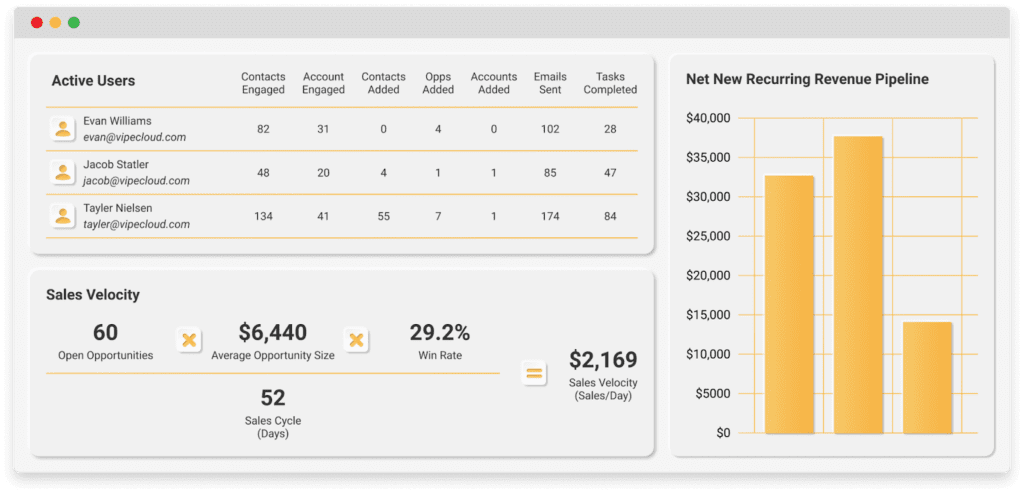
Lead generation is what gets the ball rolling as far as growing business revenue.
It comes down to: having a method that rakes in consistent leads and testing different creatives, templates, and angles.
When you gain the leads, you must have marketing and sales systems that set you up to win.
So if you’re a small or medium-sized business, VipeCloud’s Marketing and Sales Suite is the perfect CRM to take people from prospects to customers!
Want to gain access to a giant repertoire of key sales and marketing tools?
Try it today for a FREE 15-days! Got questions? Our team can demo it for you here.
Lead Generation Tips FAQ
Lead generation is the process of drawing prospects to your company and capturing their interest via nurturing with the ultimate objective of converting them into customers. Job applications, discounts, blog posts, valuable content, live events, and online content are all parts of a good lead generation strategy.
The very first step in lead generation campaigns is researching the target market. Once you understand your target audience and their interests, it’s easier to develop an offer that attracts relevant leads to your business.

Thank you for sharing this informative article with us. Lead generation is crucial for business growth, and your tips are spot-on. I especially liked the emphasis on personalization and leveraging social media platforms. Implementing these strategies can definitely boost conversion rates and drive success.
lead generation is a vital thing in digital marketting
Great article! Lead generation is a critical aspect of any business, and your tips are spot on. I particularly appreciate your emphasis on the importance of personalized content and the use of automation tools. These strategies can make a significant difference in the effectiveness of lead generation efforts. Thanks for sharing these valuable insights!
Thank you for providing this information; it was extremely useful.
That’s a wonderful list of lead generation tips. It is very important to use the best methods for lead generation. It was actually great to know about.